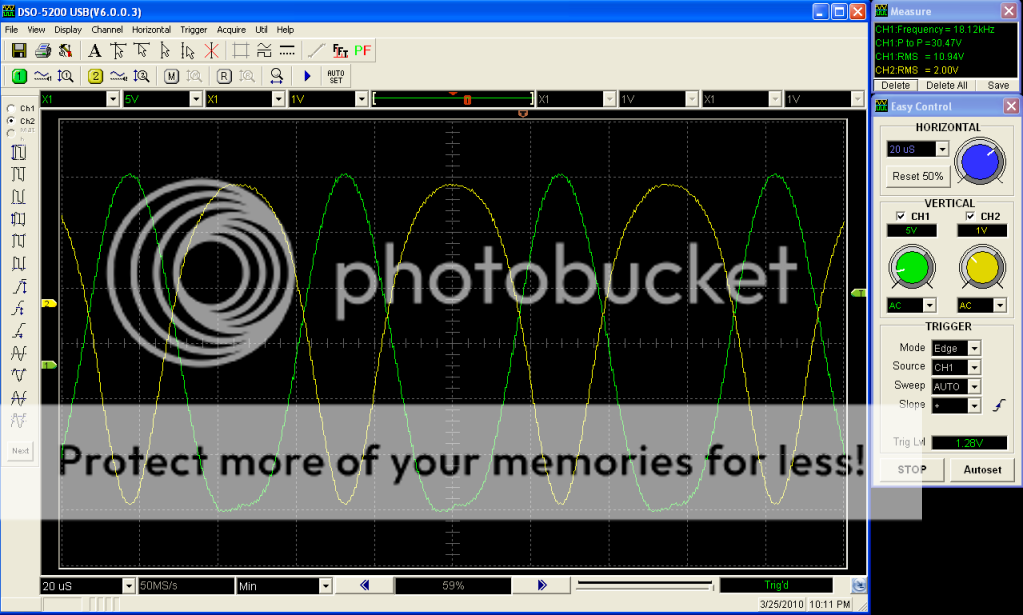Hi David,
you may want to wait a little as the more knowledgeable are recommending a mosfet that has less capacitance then the IRF640. They say that much of the energy is consumed by this high capacitance.
So, if you want to get some now! then get the IRF510 which are a little better. They are made by International Rectifier
Luc
you may want to wait a little as the more knowledgeable are recommending a mosfet that has less capacitance then the IRF640. They say that much of the energy is consumed by this high capacitance.
So, if you want to get some now! then get the IRF510 which are a little better. They are made by International Rectifier
Luc



 I wonder if the coils special winding plays a role in that. Either way this may suggest that the tuning can get better. You should be able to tune the frequency by putting a potentiometer in series with your oscilating inductor or using a magnet to tune that core. But i might be wrong, its such a new oscilator, im still trying to wrap my brain around it. I have figured out where some of your losses have come from by adding the capacitor. In the tank circuit you now have introduced a circulating current, this current is much larger than the current you are putting into the tank. We can use ohms law to determin the current.
I wonder if the coils special winding plays a role in that. Either way this may suggest that the tuning can get better. You should be able to tune the frequency by putting a potentiometer in series with your oscilating inductor or using a magnet to tune that core. But i might be wrong, its such a new oscilator, im still trying to wrap my brain around it. I have figured out where some of your losses have come from by adding the capacitor. In the tank circuit you now have introduced a circulating current, this current is much larger than the current you are putting into the tank. We can use ohms law to determin the current. 
Comment